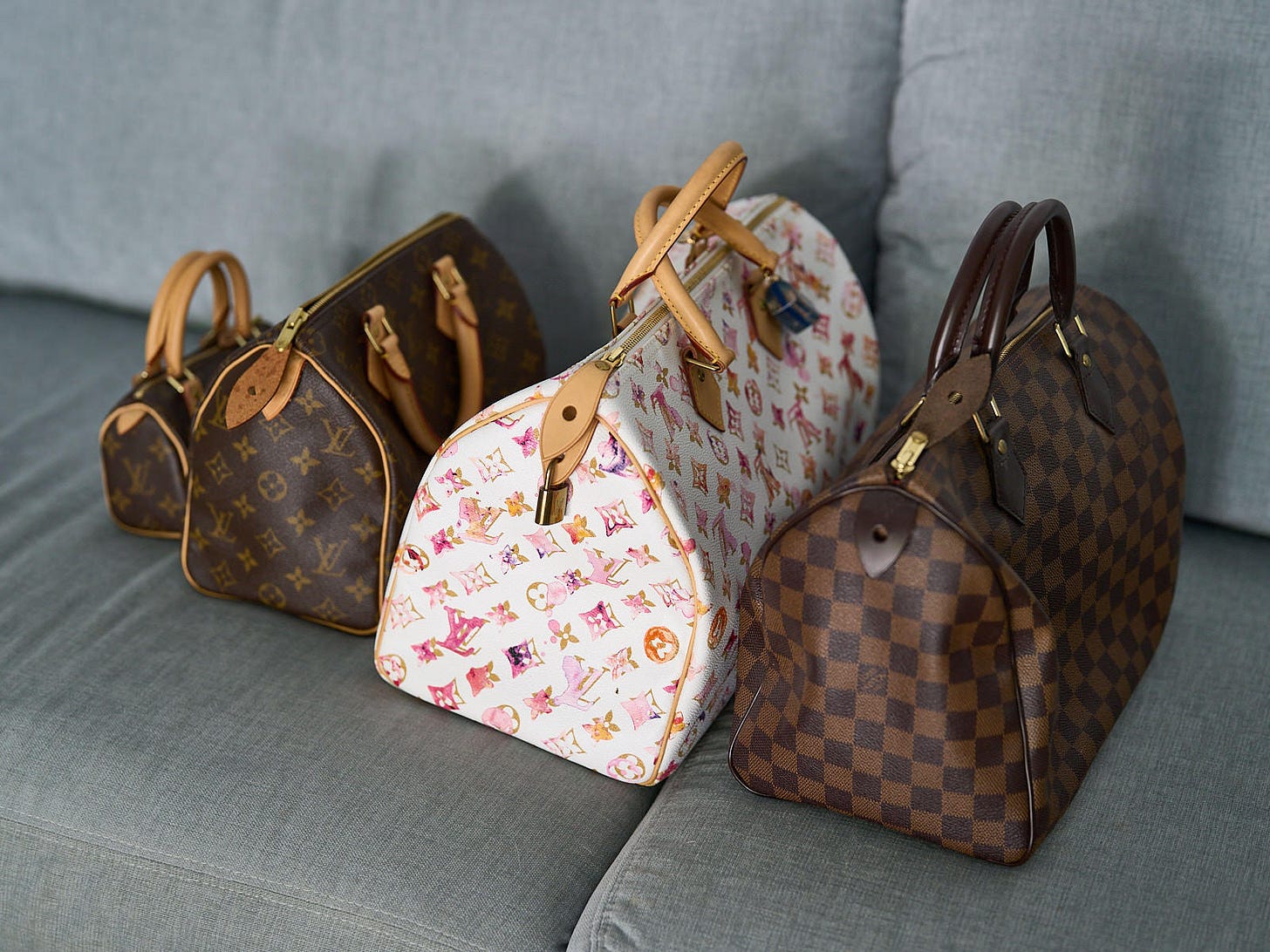Culture at large, and fashion in particular, has a funny way of reflecting society and shaping it. Yet, both are slippery concepts. Why does a particular TV show become the show to watch despite the glut of options available? Similarly, in a market saturated with handbags, many of which are designed with equal precision and intention, why do only a select few rise to iconic status?
Answering questions like why some bags become cultural phenomena while others fade into obscurity is no easy task. What exactly are people looking for when they invest in a statement piece? Do size, color, or function truly matter? How about the stories behind the items?
Yet, despite the elusive nature of “it-ness,” there’s surprising consensus among fashion experts and cultural commentators on what makes an “it” bag: timing, storytelling, and accessibility.
Scarcity, Status, and the Illusion of Inaccessibility
“The origin of an ‘it bag‘ speaks to the period it exists,” says Emily Blumenthal, founder of the Independent Handbag Designer Awards. “It has to have an element of authentic interest and, most of all, timing.”

Take, for example, The Row’s Margaux bag. A minimalist, logo-free design, it debuted in 2018. Still, it didn’t make major waves until the rise of “quiet luxury” in the early 2020s, when stealth wealth and understated elegance became aspirational ideals. “The bag checked all the boxes,” says Blumenthal.
The Balenciaga City bag is another example. Released in 2001, it rose to fame given its slouchy silhouette, moto-inspired hardware, and heavy association with off-duty models like Kate Moss and the Olsen twins. Had it launched at a time when polish and structure reigned supreme, it likely wouldn’t have caught on.
“‘It bags’ are timestamps,” says Ira Lysa, CEO of Imperial Alterations. “They’re barometers of societal aspirations—be it empowerment, rebellion, nostalgia, or innovation. They frequently serve as status symbols or vehicles for self-expression.”
Almost in tandem with timing is storytelling. For a bag to break through the noise, it must carry a narrative that reflects and informs the cultural moment.
“Function, form, and color may influence desirability, but the real selling point is the story that the bag tells and how that narrative dovetails with larger cultural values of the moment,” says Lysa.
Social Media and the Rise of the Cult Bag
In the early 2000s, opulence and logos dominated, making monogram-heavy Louis Vuitton and Dior bags the ultimate status symbols. Fast forward to today, and products like the Telfar Shopping Bag or Coperni’s glass Swipe bag are elevated for very different reasons.
“They epitomize contemporary values like inclusivity, innovation, and not just hyper-opulence,” says Lysa, indirectly commenting on the relatively affordable price of each one.
But the world of handbags is a business, so it should come as no surprise that one of the key factors contributing to a product’s “it-ness” is accessibility, or, more accurately, the illusion of inaccessibility. It’s basic supply and demand: the harder something is to get, the more people want it.

No bags have epitomized that principle more than Hermès’ Birkin and Kelly bags, both notoriously difficult to acquire, and the Chanel Classic Flap, which has undergone dramatic price hikes and increasingly limited availability in recent years. Even brands at a lower price point have come to understand the power of scarcity in driving desire.
“The Telfar Shopping Bag, also known as the ‘Bushwick Birkin,’ remains a bestseller,” notes Blumenthal. “Telfar maintains a tight control over distribution and produces in limited quantities, ensuring that its status remains in high demand and unlikely to change anytime soon.”
But in 2025, the rules have evolved. A bag must appear scarce to the average shopper, yet flood social media—seen in the hands of influencers, editors, and celebrities—to cement its cult status.
“In 2018, Jacquemus’ over-the-top, attention-grabbing marketing made the brand an international sensation, single-handedly bringing back the novelty bag trend with the Le Chiquito in one swoop,” says Blumenthal. “With its unique design, celebrity and influencer endorsements, and limited quantities, it created a cultural moment.”

Legacy vs. Hype: Which Bags Stand the Test of Time?
Of course, there’s a difference between a perennial It bag that maintains cult status decades after its debut and an It bag of the moment, still in the early stages of potential iconography. The Birkin, Kelly, Chanel Flap, Fendi Baguette, Celine Luggage Tote, and Dior Saddle Bag fall into the former category. Bags like the Telfar Shopping Bag and Bottega Veneta’s Jodie, though wildly popular, are still writing their legacy.
Interestingly, in all the conversations about what makes an It bag, shape and price rarely come up. That’s ironic, considering handbags were originally designed with function in mind, and the luxury price tags are often headline-worthy. But perhaps the fact that price isn’t emphasized is actually heartening.

It suggests that while most factors behind a bag’s success—timing, cultural storytelling, influencer saturation—are outside the average consumer’s control, there’s still a place for everyone in the trend. In a world where fashion is often viewed as elitist, the quiet omission of price from these conversations might be the most substantial proof of fashion’s egalitarian spirit. Yes, money makes the fashion world go ’round—but it doesn’t always keep people from participating in it.
Ultimately, what pushes a handbag from trendy to iconic isn’t its utility, shape, or even its cost, but its ability to capture a cultural moment, tell a story, and stir collective desire, no matter the price tag.















Great article! If I do not like something availability and hype mean nothing to me but if I like it and then I hear it is difficult to get …I have to have it now! 😂
Glad you enjoyed it!
Telfar Shopping Bag – I dont know if its just me but I find it hidieous …